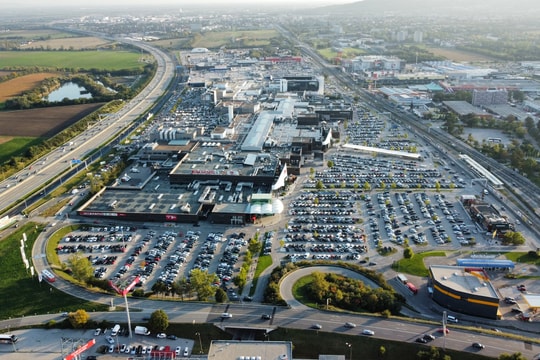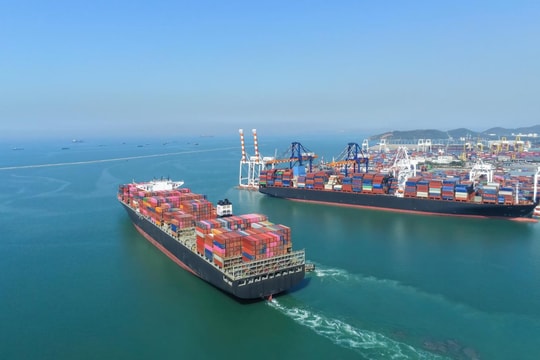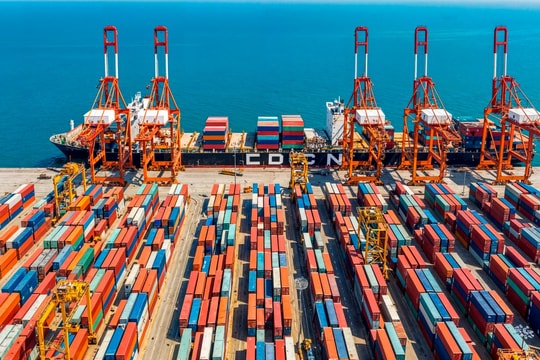
FTZs serve not only as a buffer against policy fluctuations but also open opportunities for cost optimization, cash flow improvement, and stronger internal supply chain capabilities.
A Tariff Shield
Foreign-Trade Zones in the United States are special areas authorized to receive foreign goods without immediate customs duties. Goods can be stored, processed, assembled, or re-exported without incurring duties unless they are brought into the domestic market. This policy helps businesses mitigate financial risks, delay cash outflows, and manage costs more effectively amid growing trade uncertainties. Currently, there are over 195 authorized FTZs in the U.S., with more than 300 active operations.
According to the latest report from the National Association of Foreign-Trade Zones, the total value of goods processed through FTZs reached a record $1.25 trillion in 2023, with 70% being domestic goods and 30% imported—highlighting the growing role of these zones in the modern logistics ecosystem.
With their ability to support supply chain restructuring and adapt quickly to tariff risks, FTZs are becoming a strategic choice in the long-term plans of many large industrial corporations.
Lower Costs, Higher Competitiveness
Businesses utilizing FTZs not only save on import duties but also optimize logistics and operational costs. Thanks to unlimited warehousing time within FTZs, companies can adjust their inventory strategies flexibly, avoiding storage costs when consumption timing is uncertain. Delaying duty payments until products enter the domestic market also improves cash flow—an essential element of corporate financial management.
Additionally, FTZs provide favorable conditions for manufacturers, especially those using imported components to produce goods in the U.S. In many cases, the duty on finished products is lower than the duty on individual components, allowing businesses to apply the lower rate. This is particularly beneficial as tariffs on components from China and other restricted countries rise under new laws aimed at securing supply chains and reducing dependency. FTZs also play a key role in attracting manufacturing investments, helping the U.S. retain high-tech production facilities that might otherwise relocate to Asia due to cost concerns.

Long-Term Strategy in Practice
Flexsteel Industries, one of America’s major furniture manufacturers with a supply chain spanning from Vietnam to Mexico, has proactively adopted FTZs as part of its strategy to counter a proposed 46% tariff from the U.S. Department of Commerce. The company has not only reduced import cost pressures but also leveraged FTZs to boost logistics capacity and accelerate domestic distribution.
GE Aerospace, facing an estimated $500 million increase in costs due to tariff policies, has shifted operations into FTZs to mitigate direct impacts. Likewise, manufacturers of auto parts, medical devices, and fast-moving consumer goods are actively joining FTZs to benefit from tax advantages and processing efficiency.
The notable increase in new FTZ registrations and expansions in 2024 further confirms this trend. Logistics experts believe that amid global trade realignment driven by “friendshoring” policies and laws such as the Inflation Reduction Act and the CHIPS Act, FTZs are becoming vital pillars in the localization and optimization strategies of American companies.
Conclusion
Leveraging Foreign-Trade Zones is increasingly proving to be a strategic move for U.S. businesses in effectively navigating tariff volatility and supply chain risks. FTZs are not just a short-term fix—they are becoming integral to long-term restructuring strategies, especially as domestic production gains momentum and reliance on risk-prone markets decreases. To fully harness this potential, businesses need to invest in modern supply chain management technologies, enhance data analytics capabilities, and closely collaborate with FTZ-specialized logistics providers to maintain flexibility and sustainable competitiveness in the global market.


.jpg)

.jpg)
.jpg)
.jpg)
.png)












